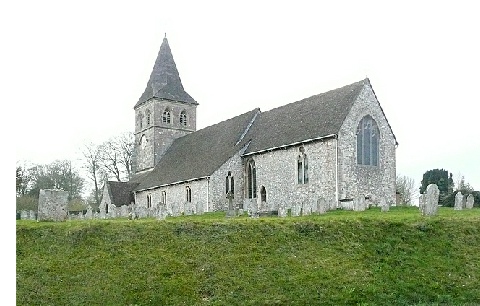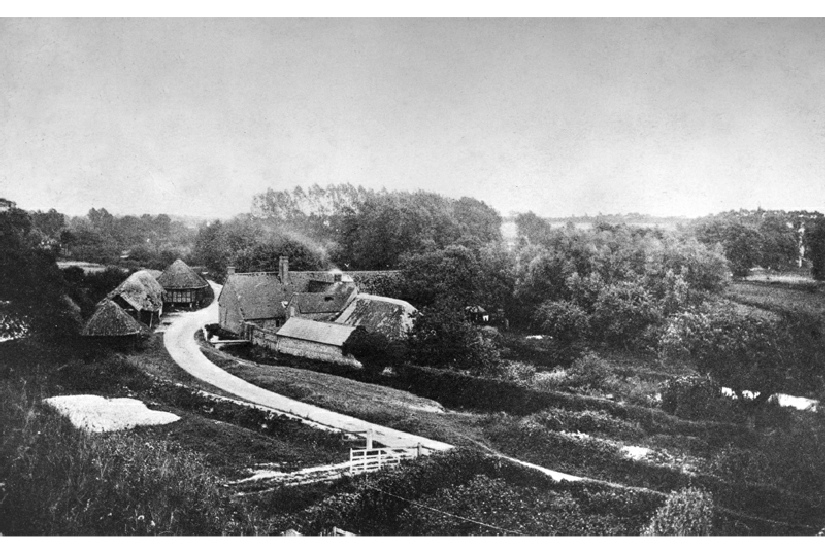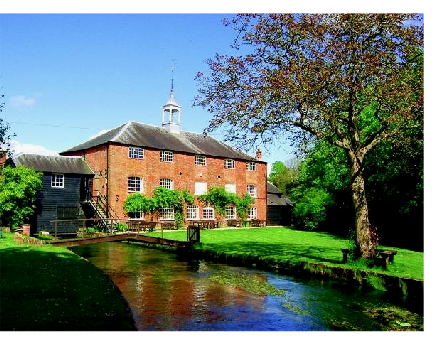The Dunford family (variants: Durnford, Dumford, Donford) of this history were agricultural
labourers from the area around Overton in Hampshire. Overton lies to the west of
Basingstoke and stands on the River Test. In the eighteenth and early nineteenth
century the town was an important staging post on the route from London to the south-west,
bringing money into the town. Its other source of wealth was from the mills that
stood on the banks of the River Test. In the eighteenth  century, silk production
began in the town when a factory - Whitchurch Silk Mill - was built to the north
of Southington to the west of the town. Many inhabitants of the town also found employment
at Laverstoke Mill where bank notes for the Bank of England were produced from 1724.
There was also a mill at Southington which milled corn.
century, silk production
began in the town when a factory - Whitchurch Silk Mill - was built to the north
of Southington to the west of the town. Many inhabitants of the town also found employment
at Laverstoke Mill where bank notes for the Bank of England were produced from 1724.
There was also a mill at Southington which milled corn.
Stephen Dunford was probably born in the late 1770s or early 1780s, near Overton,
and his life was probably like that of his father, and his father before him, and
of his neighbours; that is, the life of the agricultural labourer. By 1801 he had
met a local girl by the name of Anne Hockley, and on 21 January 1802, they were married
at the Church of St Mary in Overton in Hampshire (the church, largely remodelled
in the nineteenth century, is shown above). A few months later on 18 April, Stephen
and Ann baptised their first child, Mary Sarah Ann. A number of children were born
in the following years and baptised at St Mary’s Church including Harriet (1805),
Elizabeth (1809), and William (1818). No doubt there were more children in the intervening
years. A daughter, Frances A(nn), was born around 1813 probably around Overton, although
no baptism record has as yet been discovered.
During this period, Stephen and Ann lived near Southington Mill at Lynch, to the
west of Overton where Stephen was working as an agricultural labourer. As well as
the corn mill and the nearby silk mill, large beds of watercress were farmed in the
area. The photograph below shows the mill and surrounding fields and cottages in
about 1900, although it would not have looked very much different a hundred years
earlier when Stephen knew it. 
Stephen and Ann continued to live in the area, and in 1841, living with them was
their five-year old grandson who they were caring for whilst his parents were working
on the building of the new railway near Gosport, and their son, William, and his
wife Hannah; she was one of about eighty women and children employed at Whitchurch
Silk Mill which had been built in 1815 on the River Test (the Silk Mill is pictured
left). Ten years later, Stephen and Ann. and William and Hannah and their three children
were still living at Lynch. 
Despite his advanced years, Stephen continued to work as an agricultural labourer.
For the aged poor who could not be supported by a relative, the choice was stark:
work until they died, or seek relief from the parish which, by 1851, meant the workhouse
for most.
In September 1854, weakened by toil and old age, Stephen contracted dysentery or
‘English cholera’ as it was sometimes called. The disease, which causes severe diarrhoea
and vomiting, is spread by poor sanitation, especially unwashed hands and epidemics
occur during hot, humid and rainy seasons, especially in areas with inadequate sanitation,
poor hygiene and limited water supplies. In the nineteenth century is often proved
fatal particularly amongst the very young and the old. Stephen, by now about 74 years
old, died on 8 September 1854. His daughter-in-law, Hannah, was present.


 century, silk production
began in the town when a factory -
century, silk production
began in the town when a factory -
